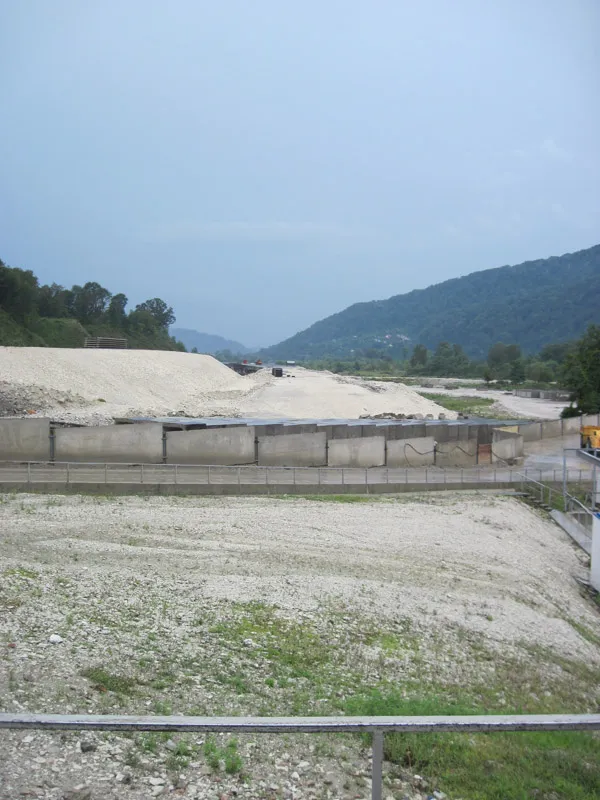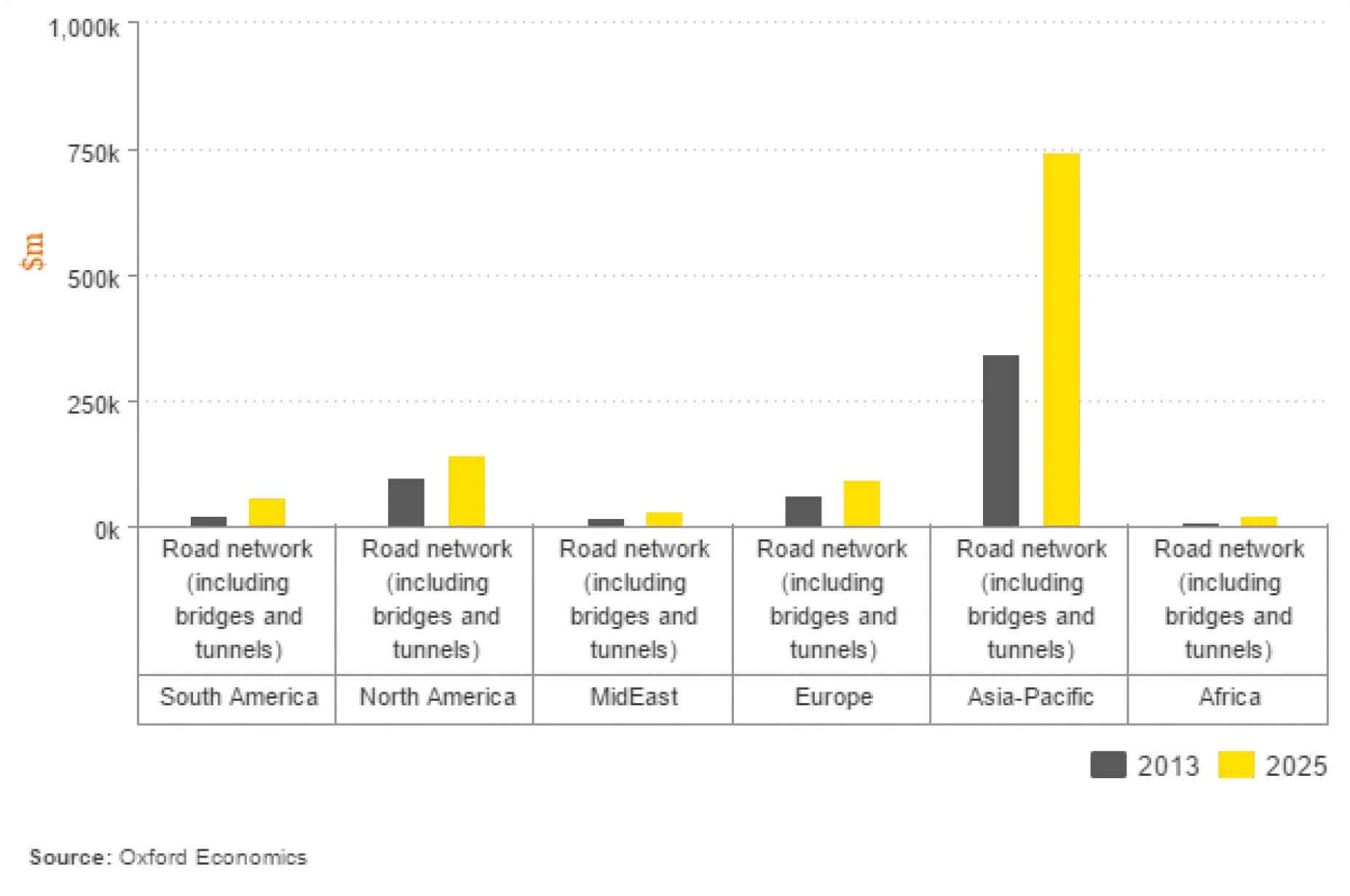OECD (Organisation for Economic Co-operation and Development) countries investment in road, rail and inland waterway infrastructure as a percentage of GDP averages around 1%, according to new research by the International Transport Forum (ITF). The figure is contained in the ITF at the OECD’s 2013 annual statistics update ‘Spending on Transport Infrastructure 1995-2011: Trends, Policies, Data’, which is accompanied by a related database, released today.
July 11, 2013
Read time: 3 mins
OECD (3685 Organisation for Economic Co-operation and Development) countries investment in road, rail and inland waterway infrastructure as a percentage of GDP averages around 1%, according to new research by the 1102 International Transport Forum (ITF).
The figure is contained in the ITF at the OECD’s 2013 annual statistics update ‘Spending on Transport Infrastructure 1995-2011: Trends, Policies, Data’, which is accompanied by a related database, released today.
The 2013 ITF update presents aggregate trends in inland transport infrastructure investment and maintenance since 1995 and provides data on road, rail, inland waterway, sea port and airport spending for the International Transport Forum member countries for the period 1995-2011.
The latest data on investment in road, rail and inland waterway infrastructure states that the average near 1% annual GDP investment has remained unchanged since 1995 in the OECD.
The investment share of GDP has remained relatively constant in Western European countries (0.8% - 0.9%). There are only few exceptions from this trend, notably Greece, Spain, Switzerland and Portugal which show significantly higher GDP shares over the period (reaching 1.6% – 2.0%). Since 2007, however, Greece and Portugal have converged closer to the WEC average, investments declining to around 1.0% of GDP.
Data for North America also show a constant GDP share (0.6%), below the OECD average.
The share of investment in Central and Eastern European countries (CEECs), which until 2002 had remained at around 1.0% of GDP, has grown sharply, reaching 2.0% in 2009 – the highest figure ever reported by these countries. Investment share of GDP fell to 1.7% in 2010, likely affected by the economic crisis. Data for 2011 show again increase, with investment share reaching 1.8%.
The fact that the share of GDP dedicated to transport infrastructure has remained constant in many countries suggests that investment levels may be affected by factors other than real investment needs.
“Level of transport spending may be guided by historical budget levels, institutional budget allocation procedures or budgetary constraints taking also into account needs in other sectors of the economy”, said the ITF’s Jari Kauppila.
The ITF update states that rising levels of investment in transition economies reflect efforts to meet rising needs especially for road network capital.
Panel data of over 600 observations gives support to the conclusion that the level of road spending generally declines with the level of GDP per capita. The ITF gives several potential reasons for this declining trend.
“As efficiency and productivity increase, production becomes less transport intensive, potentially weakening the link between the GDP growth and transport demand and therefore infrastructure investments”, explained Kauppila.
In many countries observers have raised concerns about underfunding of road assets and the state of existing road infrastructure, and its impacts on the competitiveness of the economy. Funding for road maintenance, particularly, may be postponed on the expectation that a lack of maintenance will not result in imminent asset failure. The available data on public road spending suggest that the balance between road maintenance and investment has been relatively constant over time in many regions (Figure 3). However, data do suggest an overall declining share of maintenance on total road spending especially over the last few years.
The report also presents broad conclusions on transport policies in member countries, as well as on performance, funding and strategic plans. Countries surveyed in the report emphasize the importance of an efficient and reliable transportation system. Governments formulate their strategic transport plans generally around three main themes: economic performance, environment and safety.
Download the full report and access data at: %$Linker:2 External <?xml version="1.0" encoding="utf-16"?><dictionary /> 0 0 0 oLinkExternal http://internationaltransportforum.org/statistics/investment/invindex.html internationaltransportforum.org/statistics/investment/invindex.html#sthash.h4iAOyb0.dpuf false http://internationaltransportforum.org/statistics/investment/invindex.html#sthash.h4iAOyb0.dpuf false false %>
The figure is contained in the ITF at the OECD’s 2013 annual statistics update ‘Spending on Transport Infrastructure 1995-2011: Trends, Policies, Data’, which is accompanied by a related database, released today.
The 2013 ITF update presents aggregate trends in inland transport infrastructure investment and maintenance since 1995 and provides data on road, rail, inland waterway, sea port and airport spending for the International Transport Forum member countries for the period 1995-2011.
The latest data on investment in road, rail and inland waterway infrastructure states that the average near 1% annual GDP investment has remained unchanged since 1995 in the OECD.
The investment share of GDP has remained relatively constant in Western European countries (0.8% - 0.9%). There are only few exceptions from this trend, notably Greece, Spain, Switzerland and Portugal which show significantly higher GDP shares over the period (reaching 1.6% – 2.0%). Since 2007, however, Greece and Portugal have converged closer to the WEC average, investments declining to around 1.0% of GDP.
Data for North America also show a constant GDP share (0.6%), below the OECD average.
The share of investment in Central and Eastern European countries (CEECs), which until 2002 had remained at around 1.0% of GDP, has grown sharply, reaching 2.0% in 2009 – the highest figure ever reported by these countries. Investment share of GDP fell to 1.7% in 2010, likely affected by the economic crisis. Data for 2011 show again increase, with investment share reaching 1.8%.
The fact that the share of GDP dedicated to transport infrastructure has remained constant in many countries suggests that investment levels may be affected by factors other than real investment needs.
“Level of transport spending may be guided by historical budget levels, institutional budget allocation procedures or budgetary constraints taking also into account needs in other sectors of the economy”, said the ITF’s Jari Kauppila.
The ITF update states that rising levels of investment in transition economies reflect efforts to meet rising needs especially for road network capital.
Panel data of over 600 observations gives support to the conclusion that the level of road spending generally declines with the level of GDP per capita. The ITF gives several potential reasons for this declining trend.
“As efficiency and productivity increase, production becomes less transport intensive, potentially weakening the link between the GDP growth and transport demand and therefore infrastructure investments”, explained Kauppila.
In many countries observers have raised concerns about underfunding of road assets and the state of existing road infrastructure, and its impacts on the competitiveness of the economy. Funding for road maintenance, particularly, may be postponed on the expectation that a lack of maintenance will not result in imminent asset failure. The available data on public road spending suggest that the balance between road maintenance and investment has been relatively constant over time in many regions (Figure 3). However, data do suggest an overall declining share of maintenance on total road spending especially over the last few years.
The report also presents broad conclusions on transport policies in member countries, as well as on performance, funding and strategic plans. Countries surveyed in the report emphasize the importance of an efficient and reliable transportation system. Governments formulate their strategic transport plans generally around three main themes: economic performance, environment and safety.
Download the full report and access data at: %$Linker:







